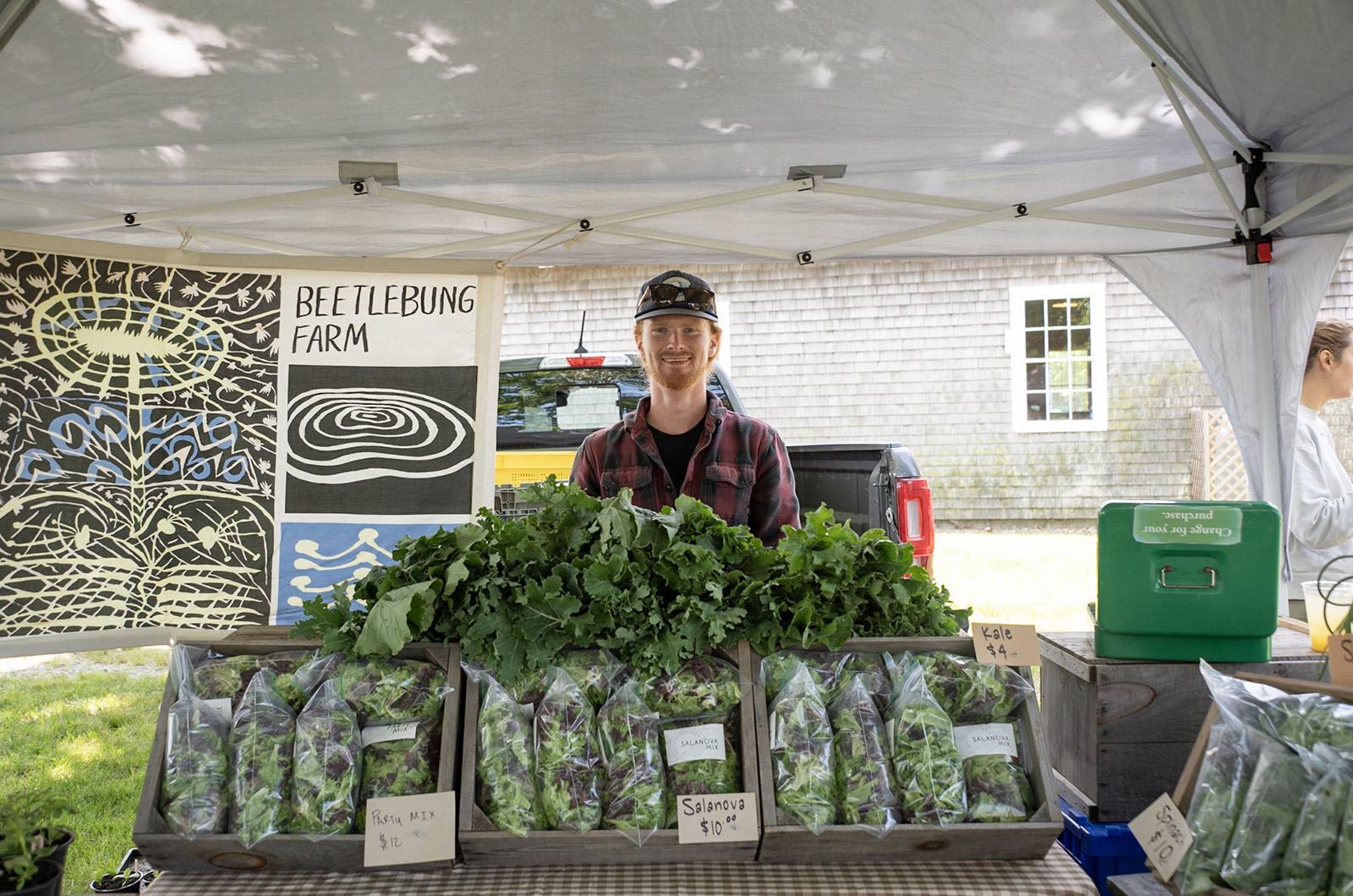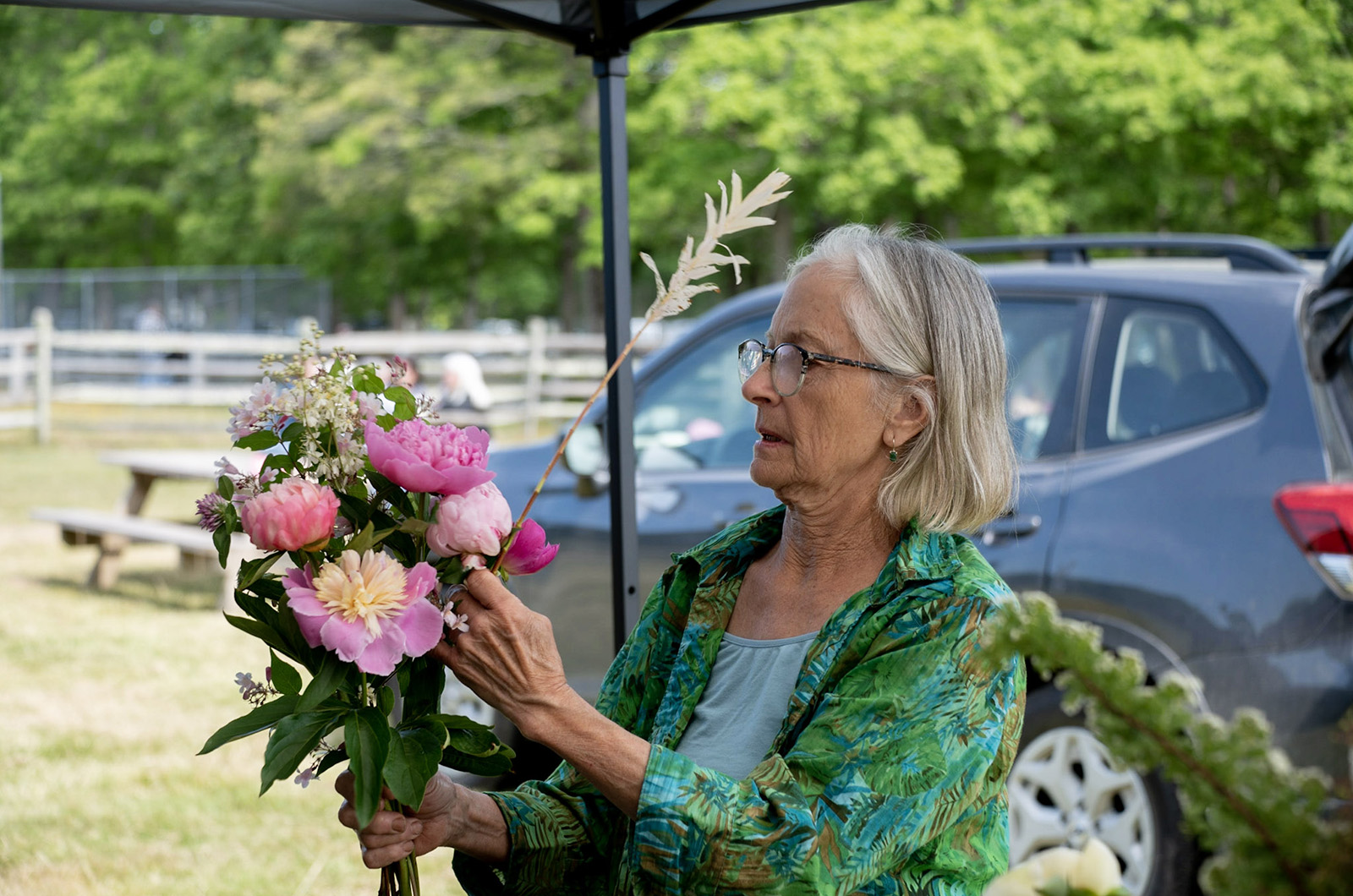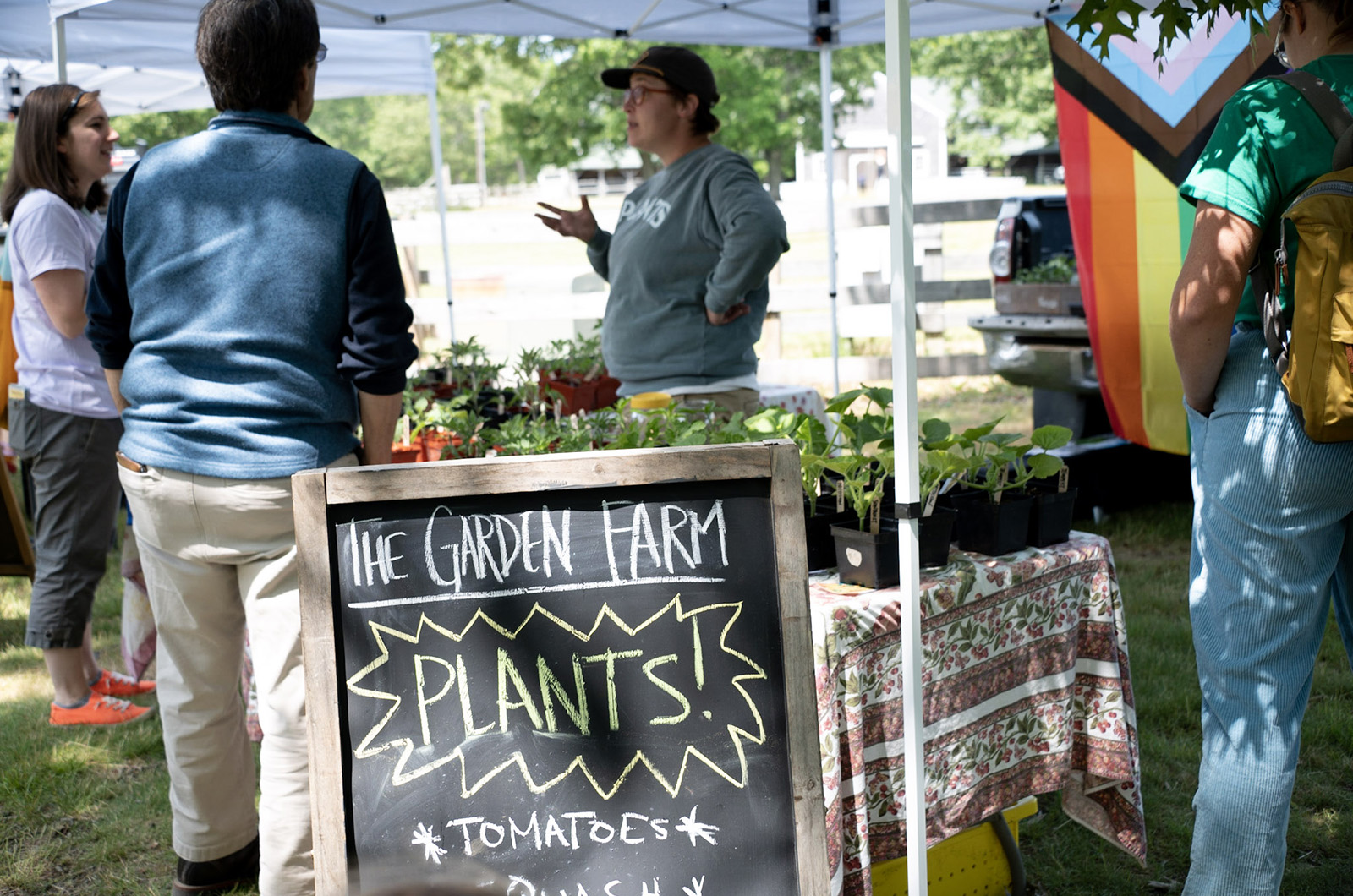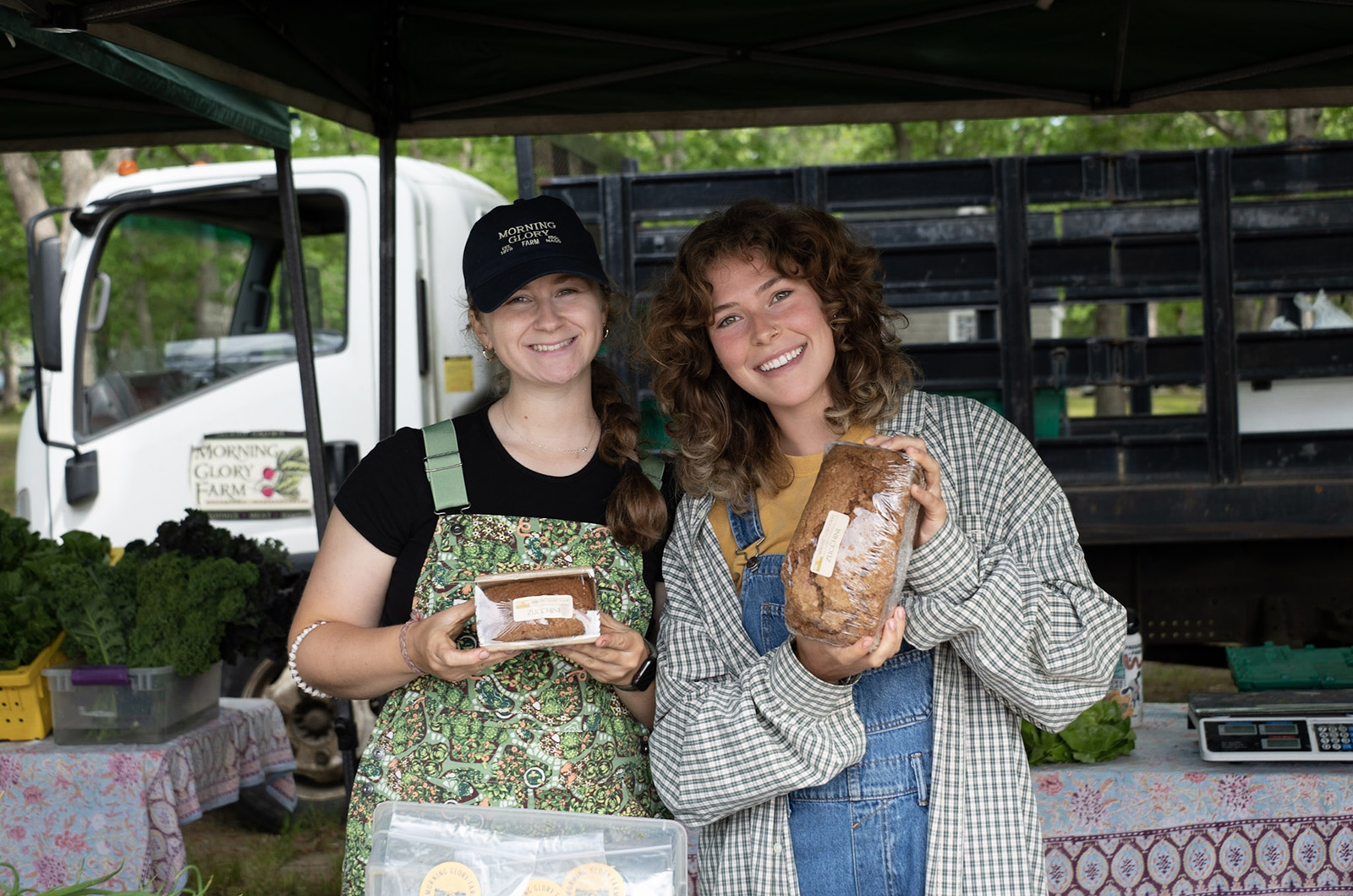Ernest Hemingway once wrote that bankruptcy comes in two ways: gradually, and then suddenly.
The phrase also seems apt to describe the arrival of spring on the Vineyard.
Ever so slowly, little green buds emerge from the oaks, and temperatures tiptoe towards temperateness. Then, suddenly, high spring hits you like a waft of airborne pollen straight to the sinuses. Middle Road turns green and wet, rainforest-esque, and the West Tisbury Farmers’ Market arrives once again.
It is in this season of change that I return with the Farm and Field report this week, bringing tidings of a bounteous harvest and bustling crowd at the debut farmers’ market last Saturday.
Springtime veggies were out in force at the Agricultural Hall: bone-white turnips and a vigorous crop of bok choy graced the North Tabor Farm stand, while Beetlebung’s tent was resplendent with greens. Morning Glory Farm, as always, came in force, with bright radishes and purple spring onions both piled high, a welcome pop of color.
Early as it is in the season, many of the stands came with seedlings in tow for the erstwhile homegrower. Farming is easier in abstract than in practice, I have always found, a fact evinced by the sickly state of my tomato plants this year.
Tomato expert Lydia Fischer of The Garden Farm, on hand that morning with a plethora of plants, gave me some much-needed words of encouragement and a useful tip: purplish tomato leaves are usually an indicator of nutrient deficiency.
Alongside longtime marketeers, several new additions came out this weekend. The Martha’s Vineyard Seafood Collaborative hawked local bluefish, scup and lobster, while Island Autism brought eggs and nasturtiums from their fledgling farm operation. Flowers stands, too, are blossoming. Fire Cat Farm and The Garden Farm have split into two stands, making way for some towering foxgloves. Morning Glory Farm’s flowers has also spun-off.
And yet this season of rebirth brings a few casualties along with it, as Nina Gordon of Kulture Club MV Kombucha explained. In addition to her fermentation operation, Ms. Gordon manages a number of beehives on-Island, both for herself and others. This winter, she said, was a tough one for beekeepers.
“I would have thought they would do well with the warm weather but the moisture got them,” she said.
Hive mortality this winter was high, she added, as much as 50 per cent for some apiarists she knows.
Lest we fall into the trap of vegetable partisanism, let us turn to another farm happening from this week. On Tuesday, a group of officials from the Massachusetts Department of Agricultural Resources came to visit the Island, part of a tour in honor of National Dairy Month.
In a field lush with mugwort and peppermint, still damp from the previous day’s rain, the group gathered to hear about Mermaid Farm’s dairy operations from owners Caitlin Jones and Allen Healy. The farm is currently milking 14 heads of cattle, Mr. Healy said, mostly Jerseys with a few Normande hybrids.
Asked when and why the farm started cheesemaking, he gave a simple equation: “Cows lactate for 10 months, and there are people here for three.”
In other words, to make better use of the harvest and to make a profit in a seasonal economy, cheese production is key.
Following the conversation, MDAR commissioner Ashley Randle presented the farm with a proclamation of National Dairy Month, signed by Gov. Maura Healy.
Grey Barn Farm was also presented with a proclamation on Tuesday, but the Chilmark dairy has been getting more attention for a different bovine achievement this summer. In the fields by their stand, Bebel, a calf just a few months old, joyfully frolicks, delighting visitors with his antics. What better sign of spring than this paragon of youth?
At Mermaid Farm, too, it seems the herd is ready for the season. As Ms. Randle spoke, a doe-eyed cow loudly mooed behind her, perhaps in celebration, perhaps in anticipation of the harvests to come.









Comments
Comment policy »